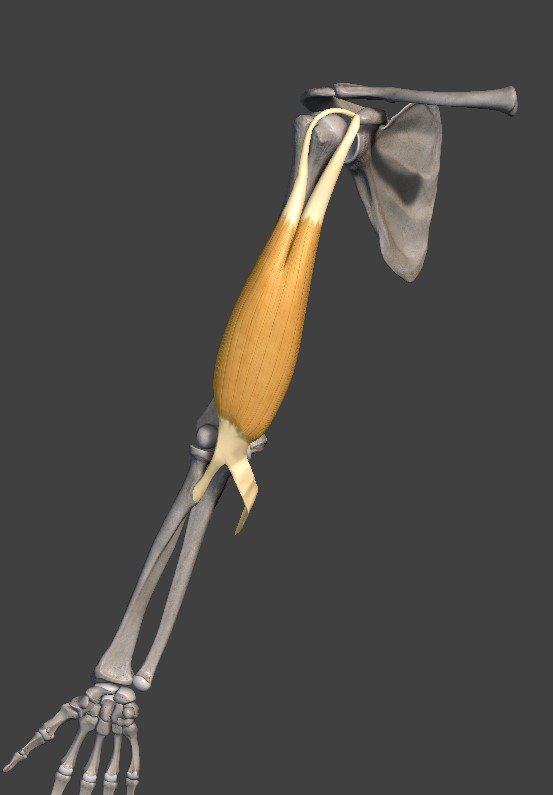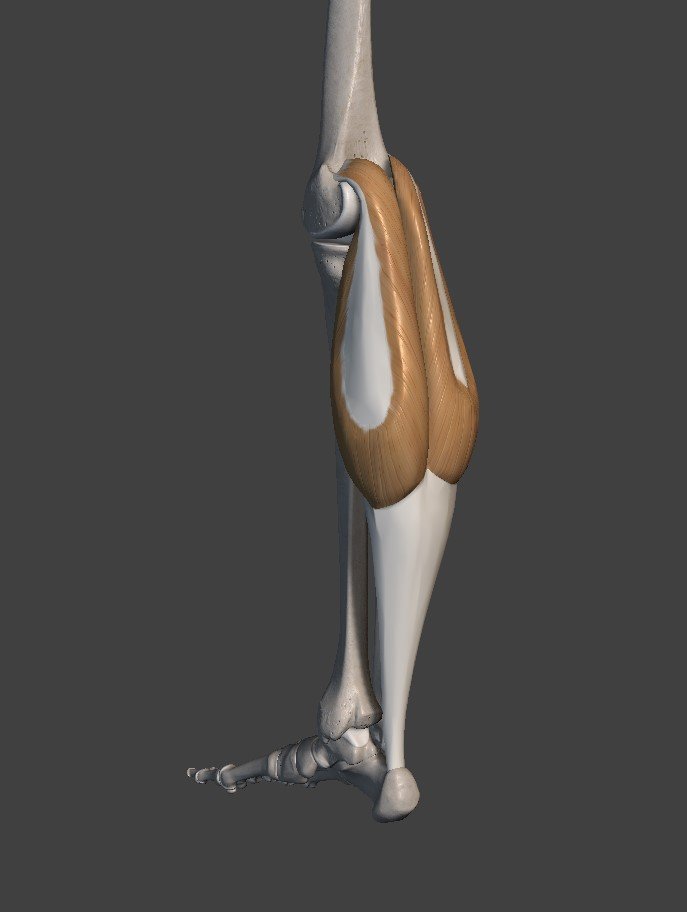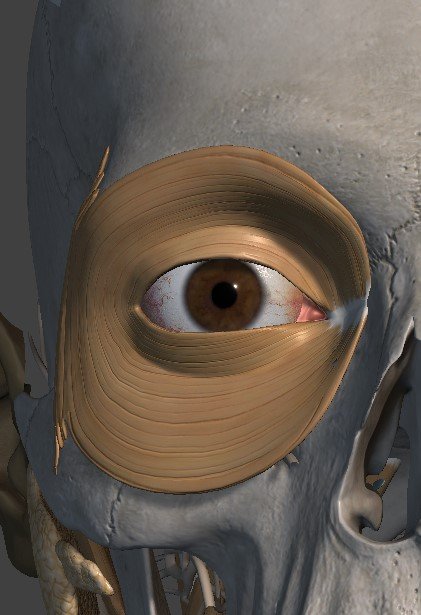Anatomy in Motion #3: Levers and Muscle Architecture
In the previous posts, we've covered joint's range of motion and how muscle pull on them to create movement. In human movement, muscles and bones act as the gears and levers that propel us through space. Understanding the mechanics behind these movements can offer insights into the efficiency and capabilities of our anatomy. Today, we delve into the world of anatomy, exploring the types of levers at play, their efficiencies, and the architecture of our muscles.
/!\ DISCLAIMER: Just so we are clear, this is not a medical lecture. Do not draw rushed conclusions or diagnose yourself or others. If you have health issues consult your doctor.
TYPES OF LEVERS
At the heart of our musculoskeletal system lies the concept of levers – simple machines that amplify force or speed. If it's well put together, a lever can lift a large weight with a small force. This is called a mechanical advantage. In the body, that is most often not the case, and we'll see why. Otherwise, levers can offer a movement advantage, where a small movement on one side can be magnified greatly on the other end. Both types can be possible but one always comes at the expense of the other, so the two cannot coexist. We'll see where the two play out and why.
There are usually four parts to a lever.
The lever arm represents the distance between the different forces acting on the lever and the fulcrum. Physically it offers the main support to the lever for the transfer of force between effort and weight. In the body, bones generally act as the lever arm.
The fulcrum is the center around which the lever acts. Changing the position of the fulcrum is in part what defines the type of lever. In the body, joints act as the fulcrum around which everything else moves.
The effort in a lever is the point where the active force attaches to the lever arm to lift the weight we are trying to move. Together with the fulcrum and weight, choosing the position of the effort changes the lever type to make it more or less effective. In the body, the source of the effort is given by the muscle, but the attachment location is taken in the spot where the muscle's tendon connects to the bone.
Load generally represents the weight we're trying to move. In the body, this is often either given by an external weight we are carrying (for example a dumbbell) or by the weight of the body (a part or the whole) we are trying to move, for example, this could be used when lifting a leg or standing up from a chair.
Now, based on how we place these components, we can create 3 main types of lever.
Type I levers are what we generally consider a standard lever. Their fulcrum is placed in the middle between the force and the weight. They are solidly efficient in lifting weights but are neither the best nor the worst. They don't give a strong advantage or disadvantage either mechanically or of movement, even though the power output can shift slightly depending on how far or close to the fulcrum the weight and the effort are respectively. In the body, this lever type can be found at the neck, where the muscles posterior of the head pull the skull up and backward.
Type II levers pose their force's effort and fulcrum at the two extremities with the load in the middle. They offer a much greater mechanical advantage compared to the other lever types but what they make up in force production they lack in range of motion. They tend to have a low movement advantage because the pull of the effort force must travel a great deal to move the weight by a small distance. In the body we can find this type of lever in a few, specific places, mostly located in the lower body where the main job of the muscles is to lift the whole body weight. One example can be found at the heel raisers muscle in the calf that lifts our whole body weight with a relatively smaller size muscle, making the strength advantage highly necessary.
Contrary to the previous one, type III levers find the fulcrum and the weight at the two extremes with the application of force right in the middle. There is a big disadvantage present in the effort-to-weight ratio. Maybe a bit surprisingly, type III levers are the most commonly found in the body. While we might not be the most efficient at lifting large weights, what we gain out of it is a big movement advantage. With that movement advantage generally comes speed and faster actions that might be better suited for our daily needs. An example of a type III lever in the body can be found in the elbow.
MUSCLE ARCHITECTURE
I've mentioned in the previous post that muscles contract in the direction of their fibers. What I haven't specifically mentioned is that muscles can differ in their architecture (and hence in the direction) of said fibers. You might have noticed that some muscles look pretty different from others, and if that's the case, that difference might be coming from their fiber arrangement.
Different types of muscle architecture. From the left: parallel, pennate, circular, convergent.
There are multiple variations of these arrangements, but for our purpose, we're just gonna focus on two types of architectures: parallel and pennate. These muscle architectures offer an extra layer of mechanical/movement advantage just like the levers we've covered, and that's why I planned to introduce them here.
Parallel fibers are so-called because they run parallel to the line of force generated. They are found in a continuous line extending from the origin to the insertion of the muscle, their functioning is quite intuitive. When they contract on the whole length of the muscle, they pull on both sides at their respective tendons. Due also to them being generally lengthy, parallel fibers are good at producing a large movement in a short amount of time. Parallel muscle fibers facilitate rapid and extensive movements, ideal for activities requiring speed and agility.
Pennate fibers generally run at an angle between the two tendons they are connected at. There exist different types of pennate muscle (bipennate, multipennate), but they all generally function on the same principle. This odd arrangement offers a much denser cross-section of the muscle compared to parallel fibers in the same amount of volume. More muscle fibers generally means more force produced. Commonly found in the lower body, pennate muscles excel in tasks demanding raw power and endurance.
You can see how the cross-section of a pennate muscle can incorporate many more muscle fibers in the same amount of space. As you can intuit, this extra force production comes at the cost of the range of motion. When they contract, they cannot pull the tendons as far as parallel fibers can. Just like type II levers, pennate fibers are far more common in the lower part of the body where lifting heavy weight is necessary.
What does this mean for animation?
In every movement we make, we try to put in the least effort to produce the maximum result. This is just as true in our macroscopic movements as it is in our anatomy. We use principles like levers all the time to lift weight from light to heavy. Think about it, trying to lift a heavy object on top of your head, are you more likely to keep it closer to the body as you raise it or to extend your arms in front of you fully? Holding a heavy object far away from your body's center can make it feel like the weight has doubled.
What if instead of a heavyweight you had to throw a light ball in the air? Would you change your technique and keep the arm straight as you swing it quickly upwards? Would you trade strength for some movement advantage? That ball could gain a lot more momentum that way by running a much bigger distance in a small amount of time.
Similarly, the pennate muscle of the lower body can offer much more strength. If what you need to lift is something more similar to a heavy table you will avoid using your upper body altogether and rely instead entirely on the powerful muscle of the gluteus and the lower body.
These levers and muscle architecture can help partially explain why different body parts move more or less snappy, and why arms can accelerate faster than a head or the legs, for example.
Knowing the action's challenge and goal can help us determine the best and most efficient path to get there. Which muscles would be involved and how. Knowing that we can intuitively know what then that action would look like. Which is, in the end, what we are looking for.
Picture used from: https://pressbooks.ccconline.org/bio106/chapter/muscular-structures-and-functions/ (modified)



















In the previous posts, we've covered the joint's range of motion and how muscles pull on them to create movement. Today, we'll dive a little bit deeper and see how both the shape of bones and muscle attachment to them interact to create a lever-like system.